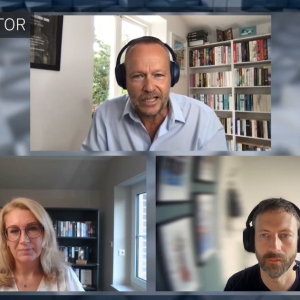The firm’s CTO, Bill Cason, told us that has taken about 25 of the company’s developers over a year to build Troux 7. He said it is the first platform built atop enterprise architecture technology that can help enterprises to automate the understanding of their businesses, and how their IT infrastructure relates to that business.
Say the business decides to expand into China, Cason said, they can use Troux 7 to map out a set of scenarios. They can look at alternate approaches to the problem and evaluate the options: the fastest, the cheapest, the one that uses partners and so on. But we also recognize that any scenario goes through a set of time-sequence states, so the company can go through these and compare the states and scenarios to make their decisions.
New Troux Initiatives extend the Troux Metaverse metadata repository, making it possible to model transformations over time with a view of people, process and technologies.
Cason said that another key feature of Troux 7 is its ability to keep itself up-to-date with changes to the underlying business data. For instance, any future scenario is at least partially dependent on the current state of the business and its IT, for instance how many servers there are, or how much spare capacity they have.
Troux has applied for a patent on technology it calls Reflection, that automatically but optionally aggregates information from multiple enterprise data sources to keep the current data fresh, which in turn means that future scenarios being modeled should also remain evergreen, according to Cason.
He said that users of Troux 7 can now compare the current state of their IT and business infrastructure to the modeled future scenarios, and then export a list of add, change or delete tasks that can be handed to individual project managers to get the firm from where it is today to its desired future state.
Asked how much training is required for users to get up-to-speed in the use of Troux 7, Cason conceded that the software is enterprise class and so does require some training. But he said the firm has worked hard on ease-of-use with Troux 7 and the company aims to get customers to value within 90 days.
Another new addition with the latest release is Troux Composer, a GUI tool that makes it simpler and faster for administrators or super-users to customize the front-end interface for individual end-users or groups. These front ends can also be delivered as web applications.
Troux 7 is available now, and the core platform is free to current Troux customers, while there is a fee for the addition of the Troux Composer module.
Troux Technologies counts Accenture, CSC, and EDS among its partners, and says it has around 350 customers worldwide. The firm is privately held and has headquarters in Austin, Texas.
Our View
As we have reported previously, Troux, Telelogic (recently acquired by IBM), and others have long argued that enterprise architecture is of little value unless companies are using it to make real business decisions or to help to drive strategy.
With this latest release, Troux is really staking a claim to the idea of transformational EA. This means EA that is not designed to map the company’s current architecture, but instead a tool to take the company from where it is today to another place it wants to get to as a fundamental tenet of its strategy.
There are plenty of companies grappling with various IT transformation programs, brought on by the likes of M&A activity, compliance and regulatory issues or simply a big cost-cutting exercise, which may find Troux’s new marketing resonates for them. With Telelogic in the process of being digested into IBM, now is a good time for Troux to make a big push to become the independent EA vendor of choice.






